Easy Vegetables to Grow in Pots: A Beginner’s Guide
Introduction
Gardening is a rewarding and fulfilling hobby that can bring fresh, homegrown produce right to your table. For those who don’t have a large garden space or live in urban areas, growing vegetables in pots is an excellent alternative. Container gardening allows you to cultivate a variety of vegetables on your balcony, patio, or even windowsill. In this comprehensive guide, we’ll explore some of the easiest vegetables to grow in pots, providing you with all the information you need to get started.
Benefits of Growing Vegetables in Pots
Before we delve into the specific vegetables that are easy to grow in pots, it’s important to understand the numerous benefits of container gardening:
- Space Efficiency: Even if you have a small living space, you can still grow a significant amount of vegetables in pots. This is particularly beneficial for apartment dwellers or those with limited outdoor areas.
- Flexibility: Pots can be moved around to take advantage of sunlight or to protect plants from harsh weather conditions. This mobility also allows you to experiment with different plant placements.
- Pest Control: Growing vegetables in pots can reduce the risk of pests and diseases. You can easily monitor and manage the health of your plants, and if one plant becomes infected, it’s easier to isolate it.
- Soil Control: When you grow vegetables in pots, you have complete control over the soil quality. You can choose the best soil mix for your plants, ensuring they receive the necessary nutrients.
- Accessibility: Container gardening is more accessible for people with physical limitations or those who find traditional gardening too strenuous. Pots can be placed at a convenient height, making it easier to care for the plants.
Now that we’ve covered the benefits, let’s dive into the list of easy vegetables to grow in pots.
1. Tomatoes
Why Tomatoes?
Tomatoes are one of the most popular vegetables (technically a fruit) to grow in containers. They are relatively easy to care for and come in a variety of sizes, from cherry tomatoes to larger beefsteak varieties. The taste of homegrown tomatoes is unparalleled, making them a favorite among gardeners.
Growing Requirements
- Container Size: Choose a pot that is at least 12 inches deep and wide. For larger tomato varieties, opt for a container with a minimum capacity of 5 gallons.
- Soil: Use well-draining, nutrient-rich soil. A mix of potting soil with compost or well-rotted manure works well.
- Sunlight: Tomatoes require at least 6-8 hours of direct sunlight daily.
- Watering: Keep the soil consistently moist, but not waterlogged. Water at the base of the plant to avoid wetting the leaves, which can lead to disease.
- Support: Most tomato plants will need some form of support, such as a stake or cage, to keep the plant upright as it grows.
Varieties to Try
- Cherry Tomatoes: ‘Sweet 100,’ ‘Sungold’
- Determinate Varieties: ‘Patio Princess,’ ‘Bush Early Girl’
- Indeterminate Varieties: ‘Brandywine,’ ‘Cherokee Purple’
2. Lettuce
Why Lettuce?
Lettuce is one of the easiest and quickest vegetables to grow in pots. It thrives in cooler weather and can be harvested as early as 30 days after planting. Lettuce is also a cut-and-come-again vegetable, meaning you can harvest the outer leaves and let the plant continue growing.
Growing Requirements
- Container Size: A shallow pot that is at least 6-8 inches deep is sufficient for lettuce. You can grow multiple plants in a single container as long as they have some space to spread out.
- Soil: Use a loose, well-draining potting mix enriched with organic matter.
- Sunlight: Lettuce prefers partial shade, especially in hot climates. Aim for 4-6 hours of sunlight per day.
- Watering: Keep the soil consistently moist, but avoid overwatering. Lettuce has shallow roots, so regular, light watering is ideal.
- Fertilization: Lettuce doesn’t require heavy feeding, but a balanced, water-soluble fertilizer can be applied once or twice during the growing season.
Varieties to Try
- Leaf Lettuce: ‘Black-Seeded Simpson,’ ‘Oakleaf’
- Romaine: ‘Parris Island,’ ‘Little Gem’
- Butterhead: ‘Tom Thumb,’ ‘Buttercrunch’
3. Radishes
Why Radishes?
Radishes are another fast-growing vegetable that is perfect for container gardening. They are ready for harvest in as little as 25-30 days and can be grown in small spaces. Radishes also make great companion plants, as they can help deter pests from other vegetables.
Growing Requirements
- Container Size: Choose a pot that is at least 6 inches deep and wide. Radishes don’t require much space, so you can plant them close together.
- Soil: Use well-draining, sandy soil to allow the radishes to develop properly. Avoid soil that is too rich, as this can lead to poor root development.
- Sunlight: Radishes need at least 6 hours of sunlight per day. They can tolerate some shade, but too much shade will result in poor growth.
- Watering: Keep the soil consistently moist, but not soggy. Water regularly, especially during dry spells, to ensure proper root formation.
- Thinning: Once the radishes sprout, thin them out to allow 2-3 inches of space between each plant. This ensures that the roots have enough room to grow.
Varieties to Try
- Round Radishes: ‘Cherry Belle,’ ‘French Breakfast’
- Long Radishes: ‘Icicle,’ ‘Daikon’
4. Carrots
Why Carrots?
Carrots are a versatile and nutritious vegetable that can be grown successfully in pots. They are an excellent choice for beginner gardeners and come in various colors and sizes. Growing carrots in containers allows you to control the soil quality, which is crucial for producing straight, well-formed roots.
Growing Requirements
- Container Size: Use a deep pot that is at least 12 inches deep. Carrots need space for their roots to grow, so a deep container is essential.
- Soil: Carrots prefer loose, sandy soil that is free of rocks and debris. A potting mix with added sand or perlite works well.
- Sunlight: Carrots need full sun, with at least 6-8 hours of sunlight daily.
- Watering: Keep the soil consistently moist, especially during the early stages of growth. Water deeply to encourage root development.
- Thinning: Once the seedlings are a few inches tall, thin them out to provide 2-3 inches of space between each plant.
Varieties to Try
- Short Varieties: ‘Nantes,’ ‘Thumbelina’
- Long Varieties: ‘Danvers,’ ‘Imperator’
- Colorful Varieties: ‘Cosmic Purple,’ ‘Yellowstone’
5. Peppers
Why Peppers?
Peppers are a warm-season vegetable that thrives in containers. Whether you prefer sweet bell peppers or spicy chili peppers, they are relatively easy to grow and add a burst of color to your garden. Peppers are also compact plants, making them ideal for small spaces.
Growing Requirements
- Container Size: Choose a pot that is at least 10-12 inches deep and wide. Peppers can be grown individually or in pairs, depending on the container size.
- Soil: Use well-draining, nutrient-rich soil. A potting mix with added compost or slow-release fertilizer works well.
- Sunlight: Peppers need at least 6-8 hours of direct sunlight daily.
- Watering: Keep the soil consistently moist, but not waterlogged. Water at the base of the plant and avoid wetting the foliage.
- Fertilization: Peppers benefit from regular feeding with a balanced, water-soluble fertilizer, especially during flowering and fruiting.
Varieties to Try
- Sweet Peppers: ‘California Wonder,’ ‘Mini Bell’
- Hot Peppers: ‘Jalapeño,’ ‘Cayenne’
- Ornamental Peppers: ‘Black Pearl,’ ‘Numex Twilight’
6. Spinach
Why Spinach?
Spinach is a nutrient-dense leafy green that grows quickly and easily in pots. It is a cool-season crop, making it ideal for early spring or fall planting. Spinach can be harvested multiple times by picking the outer leaves, allowing the plant to continue producing.
Growing Requirements
- Container Size: Use a shallow pot that is at least 6-8 inches deep. Spinach doesn’t require much space, so you can plant multiple plants in one container.
- Soil: Use a well-draining, fertile potting mix enriched with organic matter.
- Sunlight: Spinach prefers partial shade, especially in warmer climates. Aim for 4-6 hours of sunlight per day.
- Watering: Keep the soil consistently moist, but avoid overwatering. Spinach has shallow roots, so regular, light watering is ideal.
- Fertilization: Spinach doesn’t require heavy feeding, but a balanced, water-soluble fertilizer can be applied once during the growing season.
Varieties to Try
- Savoy Spinach: ‘Bloomsdale,’ ‘Tyee’
- Smooth-Leaf Spinach: ‘Space,’ ‘Red Cardinal’
- Semi-Savoy Spinach: ‘Teton,’ ‘Catalina’
7. Green Beans
Why Green Beans?
Green beans, also known as string beans or snap beans, are easy to grow in pots and provide a bountiful harvest. They come in both bush and pole varieties, with bush beans being more compact and suitable for container gardening. Green beans are a great source of vitamins and can be eaten fresh or preserved.
Growing Requirements
- Container Size: For bush beans, use a pot that is at least 8-10 inches deep. Pole beans require a deeper pot and some form of support, such as a trellis or stakes.
- Soil: Use well-draining, fertile soil with added compost or slow-release fertilizer.
- Sunlight: Green beans need full sun, with at least 6-8 hours of sunlight daily.
- Watering: Keep the soil consistently moist, but not waterlogged. Water at the base of the plant to avoid wetting the foliage.
- Support: Bush beans don’t require support, but pole beans will need a trellis or stakes to climb.
Varieties to Try
- Bush Beans: ‘Provider,’ ‘Contender’
- Pole Beans: ‘Blue Lake,’ ‘Kentucky Wonder’
- Purple Beans: ‘Royal Burgundy’
8. Cucumbers
Why Cucumbers?
Cucumbers are a versatile and refreshing vegetable that can be grown in pots with proper support. They are fast-growing and produce a generous yield. Cucumbers come in both bush and vining varieties, with bush types being more suitable for container gardening.
Growing Requirements
- Container Size: Use a pot that is at least 12 inches deep and wide. Vining cucumbers will need a trellis or other support structure.
- Soil: Use well-draining, nutrient-rich soil with added compost or slow-release fertilizer.
- Sunlight: Cucumbers need full sun, with at least 6-8 hours of sunlight daily.
- Watering: Keep the soil consistently moist, especially during flowering and fruiting. Water at the base of the plant to avoid wetting the foliage.
- Fertilization: Cucumbers benefit from regular feeding with a balanced, water-soluble fertilizer, especially during flowering and fruiting.
Varieties to Try
- Bush Varieties: ‘Bush Champion,’ ‘Spacemaster’
- Vining Varieties: ‘Marketmore 76,’ ‘Straight Eight’
- Pickling Cucumbers: ‘Boston Pickling,’ ‘National Pickling’
9. Beets
Why Beets?
Beets are a nutrient-packed root vegetable that grows well in containers. Both the roots and the leafy tops are edible, making them a versatile addition to your container garden. Beets are relatively easy to grow and can be harvested in about 50-70 days.
Growing Requirements
- Container Size: Use a deep pot that is at least 10-12 inches deep. Beets need space for their roots to develop properly.
- Soil: Use loose, well-draining soil with added compost or organic matter. Avoid soil that is too rich, as this can lead to poor root formation.
- Sunlight: Beets need full sun, with at least 6 hours of sunlight daily.
- Watering: Keep the soil consistently moist, especially during root development. Water deeply to encourage proper root formation.
- Thinning: Once the seedlings are a few inches tall, thin them out to provide 2-3 inches of space between each plant.
Varieties to Try
- Red Beets: ‘Detroit Dark Red,’ ‘Ruby Queen’
- Golden Beets: ‘Golden Boy,’ ‘Burpee’s Golden’
- Striped Beets: ‘Chioggia,’ ‘Candy Stripe’
10. Herbs (Bonus)
Why Herbs?
While not a vegetable, herbs are a fantastic addition to any container garden. They are easy to grow, require minimal space, and can enhance the flavor of your home-cooked meals. Many herbs are perennials, meaning they will return year after year, providing a continuous supply of fresh flavors.
Growing Requirements
- Container Size: Most herbs can be grown in small pots, 6-8 inches deep. Some herbs, like rosemary and mint, may require larger containers as they grow.
- Soil: Use well-draining potting soil with added compost or organic matter.
- Sunlight: Most herbs prefer full sun, with at least 6 hours of sunlight daily. Some herbs, like mint and parsley, can tolerate partial shade.
- Watering: Keep the soil evenly moist but not waterlogged. Herbs like rosemary and thyme prefer slightly drier conditions.
- Fertilization: Herbs don’t require heavy feeding. A light application of a balanced, water-soluble fertilizer once or twice during the growing season is sufficient.
Varieties to Try
- Basil: ‘Genovese,’ ‘Thai’
- Mint: ‘Spearmint,’ ‘Peppermint’
- Parsley: ‘Italian Flat-Leaf,’ ‘Curly’
- Rosemary: ‘Tuscan Blue,’ ‘Arp’
- Thyme: ‘English Thyme,’ ‘Lemon Thyme’
Conclusion
Growing vegetables in pots is a practical and rewarding way to enjoy fresh, homegrown produce, even in small spaces. With the right containers, soil, and care, you can successfully cultivate a variety of vegetables on your balcony, patio, or windowsill. Whether you’re a beginner or an experienced gardener, the vegetables listed in this guide are some of the easiest to grow in pots. Happy gardening!



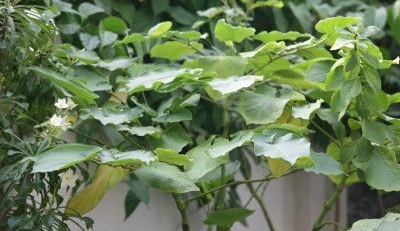
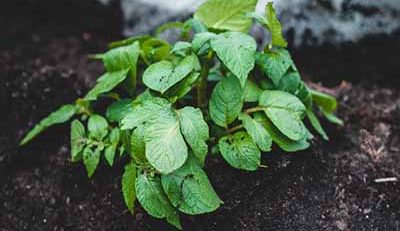
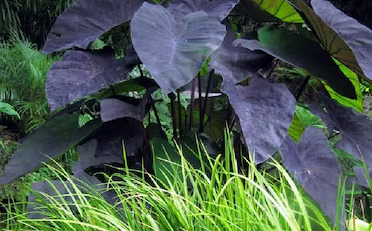
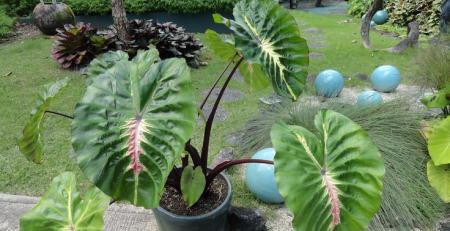
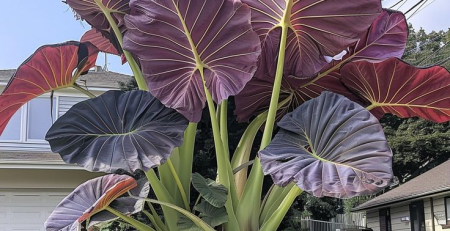
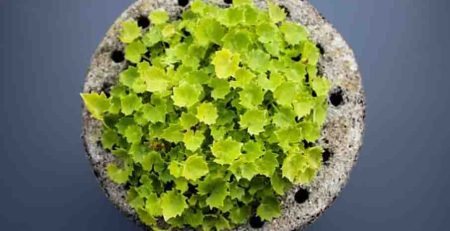
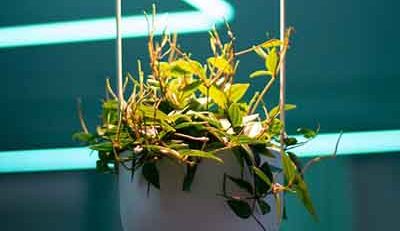
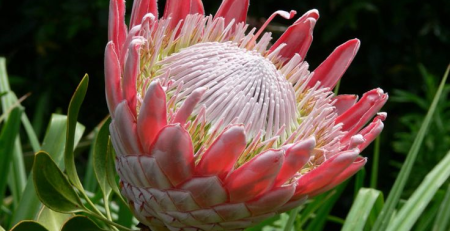

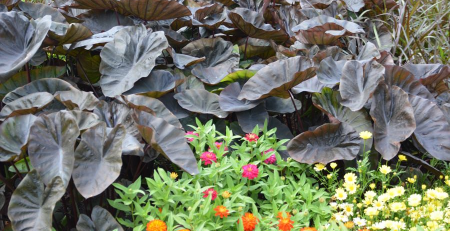
Leave a Reply